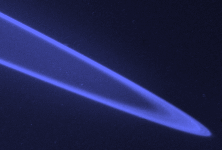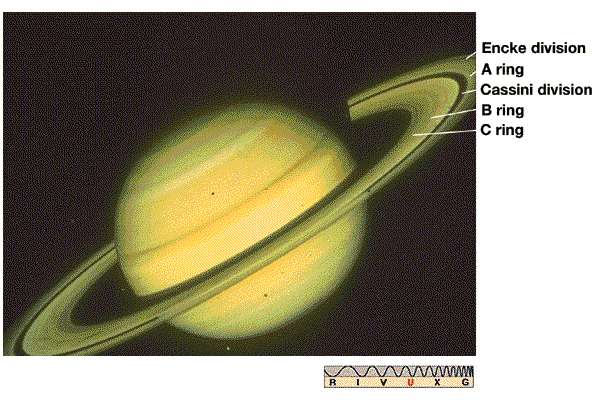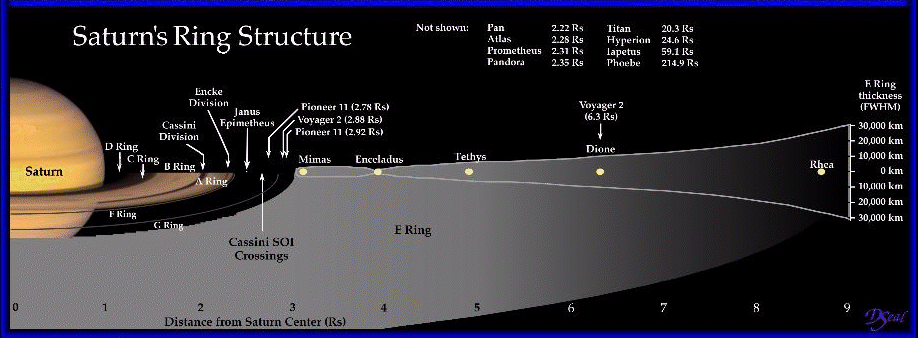Rings of Saturn and Jupiter

|

|

|

|

The rings are exceedingly thin; they are less than 1.5 km thick and more than 250,000 km in diameter! Viewed edge-on the rings, in fact, almost disappear completely from view as seen during ring plane passages.
The radius of Saturn is ~60,000 km and so, roughly speaking, the ring system of Saturn sits within about 1 planetary radius of the surface of the planet. This is, in fact, a general property for ring systems, because of something known as the Roche limit. The Roche limit arises as follows:

There are several distinct regions in Saturn's ring system:

The large gap separating the main rings (the A ring and the B ring), is known as the Cassini division (see below). There are fainter rings inside of the B ring known as the C and D rings. Embedded in the A ring is the gap known as the Encke division (see below). These large gaps probably arise because of resonances. For example, a particle moving in the Cassini division has an orbital period 1/2 that of a moon Mimas which leads to a 2:1 resonance.

Outside the A ring sits the narrow F ring. The F ring is interesting in its narrowness and its nonregular shape (it appears braided). The narrowness of the F ring is thought to arise because of the effects of shepherd moons, Pandora and Prometheus. (Note that the Encke division is thought be opened by the effects of the shepherd moon Pan embedded in the A ring.)


much of which is hard to understand. The great complexity and other things apparently going on in the rings suggests that they are fairly young, perhaps 50 million years old or so. This suggests that the rings are not debris left over from the formation of the planet, as had been suggested. Are the rings caused by the breakup of a moon or are they continuously replenished by pieces chipped off of the moons of Saturn. The answer is not yet clear.
 |
The rings were discovered in 1979 by Voyager, well inside the orbit of the innermost Galilean moon and within the Roche limit. There are, in fact, several rings, an inner halo, a main ring, and two Gossamer rings. The rings have a sharp edge near the orbit of the moon, Metis and Adrastea. The rings may in fact be particles chipped off these two moons. |
 |